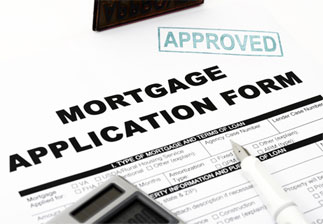A Credit Profile refers to a consumer credit file, which is made up of various consumer credit reporting agencies. It is a picture of how you paid back the companies you have borrowed money from, or how you have met other financial obligations. There are five categories of information on a credit profile:
- Identifying Information
- Employment Information
- Credit Information
- Public Record Information
- Inquiries
NOT included on your credit profile is race, religion, health, driving record, criminal record, political preference, or income.
If you have had credit problems, be prepared to discuss them honestly with a mortgage professional who will assist you in writing your "Letter of Explanation." Knowledgeable mortgage professionals know there can be legitimate reasons for credit problems, such as unemployment, illness or other financial difficulties. If you had problems that have been corrected (reestablishment of credit), and your payments have been on time for a year or more, your credit may be considered satisfactory.
The mortgage industry tends to create its own language and credit rating is no different. BC mortgage lending gets its name from the grading of one’s credit based on such things as payment history, amount of debt payments, bankruptcies, equity position, credit scores, etc. Credit scoring is a statistical method of assessing the credit risk of a mortgage application. The score looks at the following items: past delinquencies, derogatory payment behavior, current debt levels, length of credit history, types of credit and number of inquires.
By now, most people have heard of credit scoring. The most common score (now the most common terminology for credit scoring) is called the FICO score. This score was developed by Fair, Isaac & Company, Inc. for the three main credit Bureaus; Equifax (Beacon), Experian (formerly TRW), and Empirica (TransUnion).
FICO scores are simply repository scores meaning they ONLY consider the information contained in a person’s credit file. They DO NOT consider a persons income, savings or down payment amount.
Credit scores are based on five factors: 35% of the score is based on payment history, 30% on the amount owed, 15% on how long you’ve had credit, 10% percent on new credit being sought and 10% on the types of credit you have. The scores are useful in directing applications to specific loan programs and to set levels of underwriting such as Streamline, Traditional or Second Review, but are not the final word regarding the type of program you will qualify for or your interest rate.
FICO scoring has been an integral part of the mortgage process for the past few years (since 1999); however, the FICO scores have been used since the late 1950’s by retail merchants, credit card companies, insurance companies and banks for consumer lending. The data from large scoring projects, such as large mortgage portfolios, demonstrate their predictive quality and that the scores do work.
The following items are some of the ways that you can improve your credit score:
- Pay your bills on time.
- Keep Balances low on credit cards.
- Limit your credit accounts to what you really need. Accounts that are no longer needed should be formally cancelled since zero balance accounts can still count against you.
- Check that your credit report information is accurate.
- Be conservative in applying for credit and make sure that your credit is only checked when necessary.
For questions about your credit history you can contact the credit bureaus that maintain this data: but before you do, you should discuss your credit report with your loan officer as he or she has extensive experience working with borrowers with all kinds of credit issues.
Equifax, Inc. 1600 Peachtree St. NW
Atlanta, Georgia 30309
1 800 685-1111
http://www.equifax.com
Experian 34405 W. 12 Mile Rd.
Farmington Hills, MI 48331
1888-EXPERIAN (1 888 397-3742)
http://www.experian.com
Trans Union Corporation Consumer Disclosure Center
2 Baldwin Place
P.O. Box 1000
Chester, PA 19022
1 800 888-4213
http://www.transunion.com
A borrower with a score of 720 and above is considered an A+ borrower. A loan with this score will be put through an "automated basic computerized underwriting" system and be completed within minutes. Borrowers in this category qualify for the lowest interest rates and their loan can close in two to three weeks.
A score below 680 but above 620 may indicate underwriters will take a closer look in determining potential risk. Supplemental documentation may be required before final approval. Borrowers with this credit score may still obtain "A" pricing, but the loan may take longer to close.
Borrowers with credit scores below 620 are not able to obtain a mortgage loan.
All things being equal, when you have derogatory credit, all of the other aspects of the loan need to be in order. Equity, stability, income, documentation, assets, etc. play a larger role in the approval decision. Various combinations are allowed when determining your grade, but the worst-case scenario will push your grade to a lower credit grade. Late mortgage payments and Bankruptcies/Foreclosures are the most important. Credit patterns, such as a high number of recent inquiries or more than a few outstanding loans, may signal a problem. Since an indication of a "willingness to pay" is important, several late payments in the same time period is better than random lates.


 Do you have questions? We can help! You will find the answers to several frequently asked mortgage questions below.
Do you have questions? We can help! You will find the answers to several frequently asked mortgage questions below.